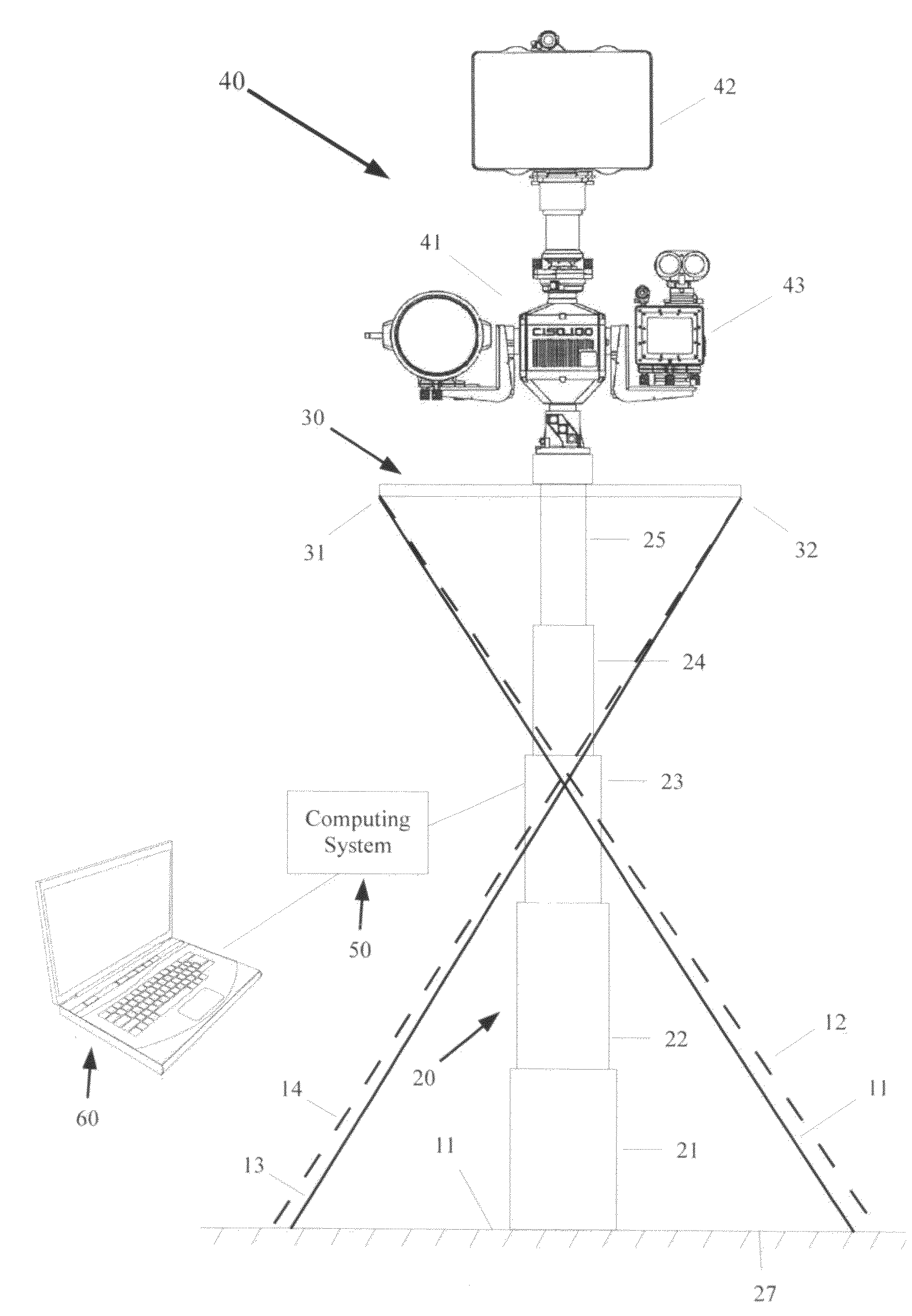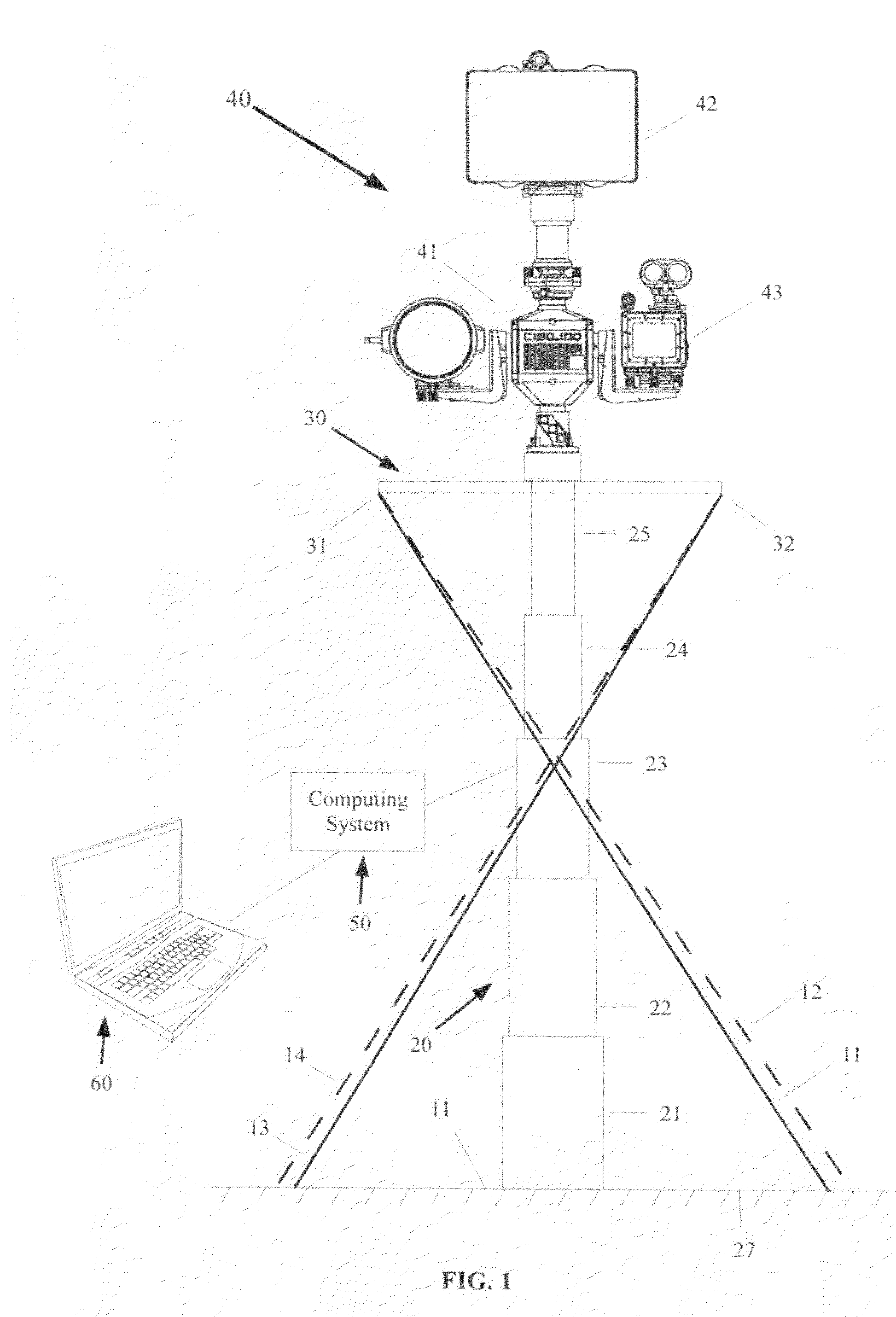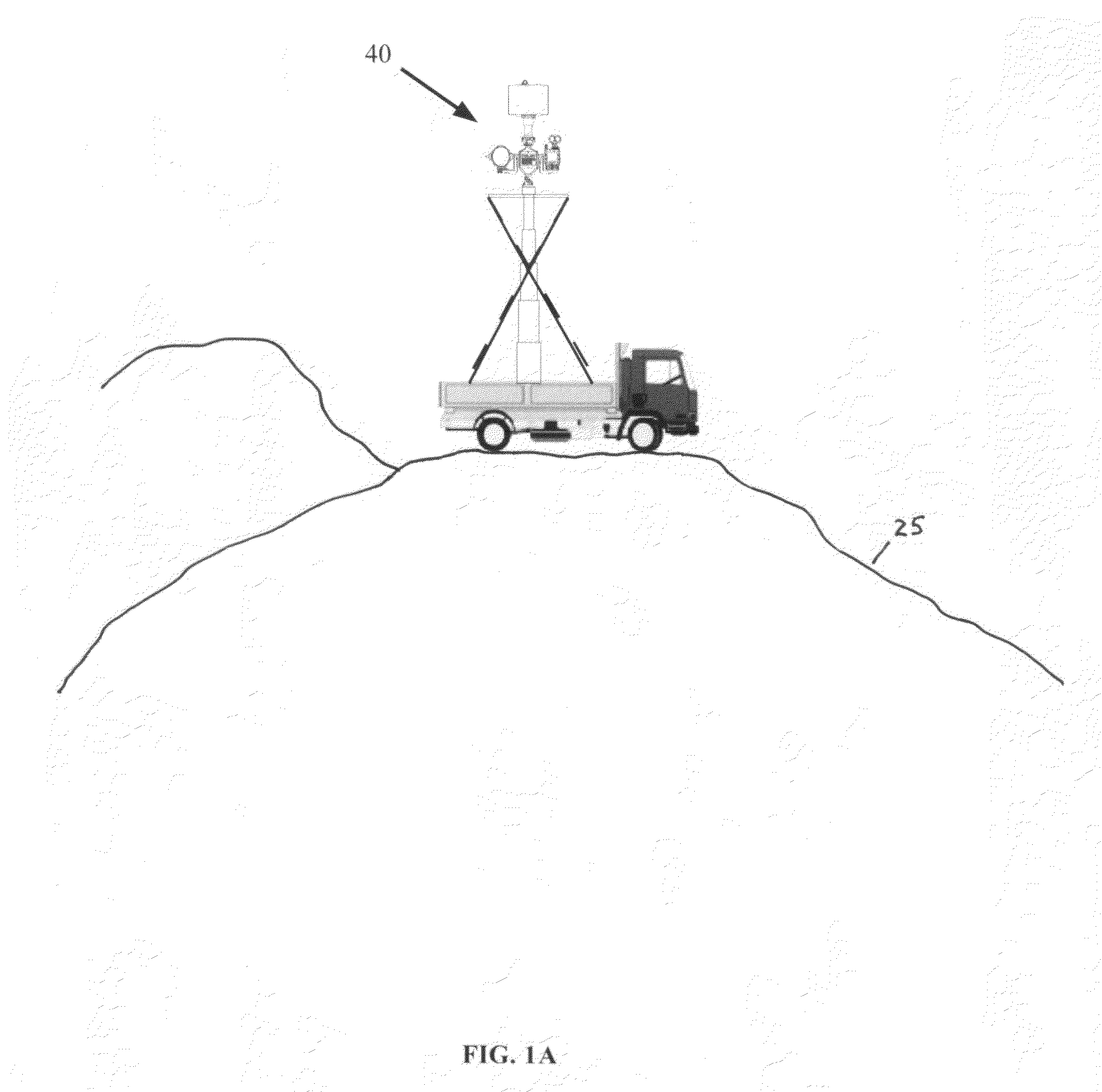Mechanical stabilization and automated positional corrections for stationary or mobile surveillance systems
a technology of automatic position correction and stationary or mobile surveillance, which is applied in the direction of television systems, using reradiation, instruments, etc., can solve the problems of limiting system pointing accuracy, affecting the accuracy of automatic camera positioning, and not accurately adjusting for terrain and manual operation, so as to reduce fatigue, enhance operator effectiveness, and accurate and cost-effective
- Summary
- Abstract
- Description
- Claims
- Application Information
AI Technical Summary
Benefits of technology
Problems solved by technology
Method used
Image
Examples
Embodiment Construction
[0040]As seen in FIG. 1, a long range surveillance system 10 may be comprised of a unitary mast (not shown) or a telescoping mast 20, having a lower end 21, and an upper end 25. The mast 20 may have any number of telescoping sections, which may occupy a collapsed or unextended position, and which may be actuated to telescope outward into an extended position. In the mast pictured in FIG. 1, there were five sections, 21-25. The mast 20 may be positioned on a suitable mounting surface 11, which may be either a ground-based surface 25 (FIG. 1) or a stationary platform surface, or alternatively, a mobile platform surface may be utilized for a particular application. The mobile platform may be a skid 26 (FIG. 2) to which the mast may be mounted, where the skid is positioned atop a truck bed surface, as illustrated in FIG. 1A. The lower end of the mast 21 may be secured to the surface 11 using any suitable means, thereby allowing the mast top end to telescope upward to a desired height. F...
PUM
 Login to View More
Login to View More Abstract
Description
Claims
Application Information
 Login to View More
Login to View More - R&D
- Intellectual Property
- Life Sciences
- Materials
- Tech Scout
- Unparalleled Data Quality
- Higher Quality Content
- 60% Fewer Hallucinations
Browse by: Latest US Patents, China's latest patents, Technical Efficacy Thesaurus, Application Domain, Technology Topic, Popular Technical Reports.
© 2025 PatSnap. All rights reserved.Legal|Privacy policy|Modern Slavery Act Transparency Statement|Sitemap|About US| Contact US: help@patsnap.com



